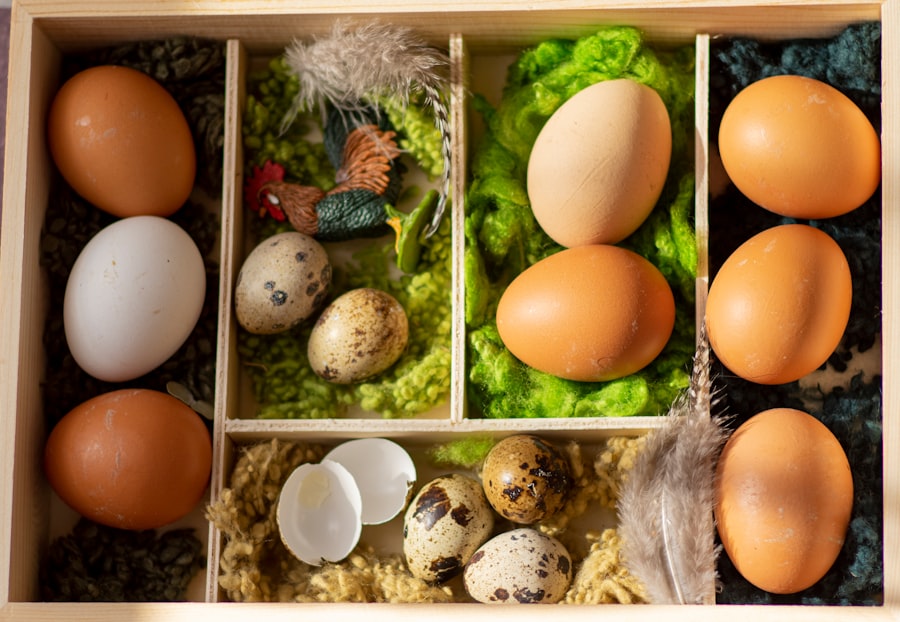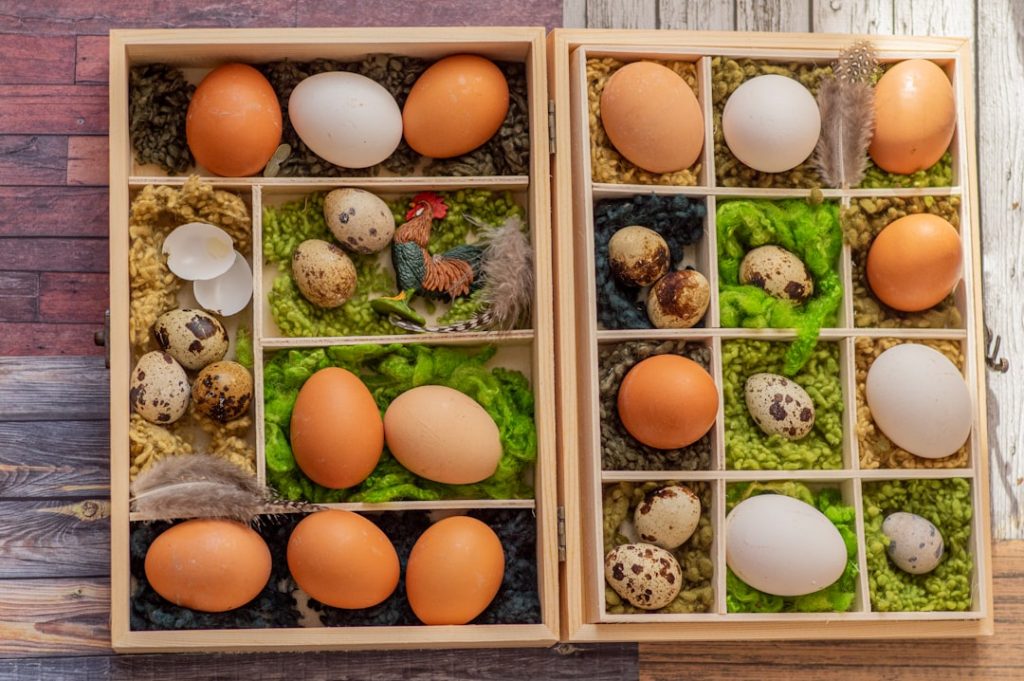Breeding quails for sale can be a lucrative and rewarding venture for those interested in poultry farming. Quails are small, easy to care for, and have a high reproductive rate, making them an ideal choice for breeding. Whether you are looking to start a small backyard operation or a larger commercial enterprise, breeding quails can provide a steady source of income and a sustainable food source. With the growing demand for quail meat and eggs in the market, there is a great opportunity for profit in this industry.
Breeding quails for sale requires careful planning, knowledge of the breeding process, and a suitable breeding environment. It is important to select the right quail breeds for breeding, create an ideal breeding environment, understand quail reproduction and breeding cycles, and care for quail chicks and young adults. Additionally, marketing and selling quails for profit and overcoming challenges in the breeding process are essential aspects to consider. In this article, we will explore each of these aspects in detail to provide a comprehensive guide to breeding quails for sale.
Table of Contents
- 1 Selecting the Right Quail Breeds for Breeding
- 2 Creating the Ideal Breeding Environment for Quails
- 3 Understanding Quail Reproduction and Breeding Cycles
- 4 Caring for Quail Chicks and Young Adults
- 5 Marketing and Selling Quails for Profit
- 6 Challenges and Considerations in Breeding Quails for Sale
- 7 FAQs
Key Takeaways
- Breeding quails for sale can be a profitable venture for those interested in poultry farming.
- Selecting the right quail breeds for breeding is crucial for success, considering factors such as egg production and meat quality.
- Creating the ideal breeding environment for quails involves providing adequate space, proper lighting, and a balanced diet.
- Understanding quail reproduction and breeding cycles is essential for maximizing breeding success and managing egg production.
- Caring for quail chicks and young adults requires attention to their nutritional needs, housing, and protection from predators.
- Marketing and selling quails for profit involves identifying target markets, promoting the benefits of quail products, and establishing reliable distribution channels.
- Challenges and considerations in breeding quails for sale include disease management, regulatory compliance, and fluctuating market demand.
Selecting the Right Quail Breeds for Breeding
When it comes to breeding quails for sale, selecting the right quail breeds is crucial for success. There are several popular quail breeds that are commonly bred for meat and eggs, including Coturnix quail, Bobwhite quail, and California quail. Each breed has its own unique characteristics and advantages, so it is important to choose the breed that best suits your breeding goals and environment.
Coturnix quail, also known as Japanese quail, are one of the most popular breeds for breeding due to their fast growth rate, high egg production, and relatively docile nature. They are well-suited for small-scale breeding operations and are known for their delicious meat and nutritious eggs. Bobwhite quail, on the other hand, are native to North America and are prized for their flavorful meat. They are more suitable for larger breeding operations and require more space compared to Coturnix quail. California quail are another popular breed known for their striking appearance and adaptability to various climates. They are often bred for their ornamental value as well as for meat and eggs.
In selecting the right quail breeds for breeding, it is important to consider factors such as space availability, climate, market demand, and personal preferences. By carefully evaluating these factors, breeders can make informed decisions on which quail breeds to raise for sale.
Creating the Ideal Breeding Environment for Quails
Creating the ideal breeding environment is essential for the health and productivity of quails. The breeding environment should provide adequate space, proper ventilation, lighting, temperature control, and nesting areas to ensure the well-being of the quails and successful breeding outcomes. Whether breeding quails in a backyard setting or a commercial operation, the breeding environment should be carefully designed to meet the specific needs of the chosen quail breeds.
Quails require a clean and spacious living area with access to fresh air and natural light. The breeding environment should be well-ventilated to prevent the buildup of ammonia from droppings and to maintain good air quality. Proper lighting is also important to stimulate egg production and maintain healthy growth in young quails. Additionally, maintaining the right temperature is crucial for successful breeding, as quails are sensitive to extreme heat or cold. Providing a consistent temperature within the breeding environment can help prevent stress and ensure optimal reproductive performance.
Nesting areas are another important aspect of the breeding environment, as they provide a safe and comfortable space for quails to lay eggs and raise their young. Nesting boxes or trays filled with suitable nesting materials such as straw or wood shavings should be provided to encourage natural nesting behavior in quails. By creating an ideal breeding environment that meets the specific needs of quails, breeders can promote healthy reproduction and maximize the productivity of their breeding operation.
Understanding Quail Reproduction and Breeding Cycles
Understanding quail reproduction and breeding cycles is essential for successful breeding and maximizing productivity. Quails are known for their high reproductive rate, with females capable of laying hundreds of eggs in a year under optimal conditions. However, to achieve successful reproduction, breeders must have a good understanding of the reproductive behavior and cycles of quails.
Quails reach sexual maturity at around 6-8 weeks of age, at which point they can start mating and laying eggs. The mating behavior of quails involves courtship displays by males, followed by copulation with females. Once fertilized, female quails will begin laying eggs within a few days and can continue laying eggs throughout the breeding season. It is important to provide suitable nesting areas and collect eggs regularly to prevent overcrowding and ensure proper incubation if hatching is desired.
Quails have a short incubation period of around 17-18 days, after which the chicks will hatch. It is important to provide a suitable brooding area with warmth, food, and water for the newly hatched chicks to ensure their survival and healthy growth. Understanding the reproductive behavior and breeding cycles of quails can help breeders anticipate egg production, plan for hatching, and manage their breeding operation effectively.
Caring for Quail Chicks and Young Adults
Caring for quail chicks and young adults is crucial for their survival and healthy development. Newly hatched quail chicks are fragile and require special care to ensure they have the best start in life. Providing a warm and clean brooding area with access to food and water is essential for the well-being of the chicks. Brooder lamps or heating pads can be used to maintain the right temperature for the chicks, while chick feeders and waterers should be easily accessible to encourage feeding and hydration.
As the chicks grow into young adults, they will require a suitable growing environment with ample space to move around and exercise. Providing a balanced diet rich in protein is important for promoting healthy growth and development in young quails. Commercially formulated quail feed or a mix of grains and seeds can be provided to meet their nutritional needs. Additionally, regular cleaning of the living area and monitoring for signs of illness or stress are important aspects of caring for young quails.
Quails reach maturity at around 6-8 weeks of age, at which point they can be separated into breeding groups based on gender. Proper care during the early stages of life can have a significant impact on the health and productivity of young adult quails as they transition into the breeding phase.
Marketing and Selling Quails for Profit

Marketing and selling quails for profit requires careful planning and consideration of market demand, pricing strategies, and distribution channels. Quail meat and eggs are highly sought after for their nutritional value and unique flavor, making them popular choices among consumers looking for alternative sources of protein. Whether selling directly to consumers, restaurants, or retailers, effective marketing strategies can help breeders maximize their sales potential.
Creating a strong brand identity and promoting the quality of quail products can help attract customers and build a loyal customer base. Utilizing social media platforms, online marketplaces, and local farmers’ markets can help reach a wider audience and generate interest in quail products. Offering value-added products such as marinated quail meat or specialty flavored eggs can also appeal to niche markets and increase sales opportunities.
Pricing strategies should be carefully considered to ensure profitability while remaining competitive in the market. Factors such as production costs, market trends, and product differentiation should be taken into account when setting prices for quail meat and eggs. Building relationships with potential buyers and maintaining consistent product quality can help establish a strong reputation in the market and drive repeat sales.
Challenges and Considerations in Breeding Quails for Sale
Breeding quails for sale comes with its own set of challenges and considerations that breeders must be prepared to address. Managing disease outbreaks, maintaining optimal breeding conditions, and ensuring consistent productivity are ongoing challenges that require careful monitoring and proactive management. Disease prevention measures such as biosecurity protocols, regular health checks, and vaccination programs can help minimize the risk of disease outbreaks in a breeding operation.
Maintaining optimal breeding conditions throughout changing seasons or environmental conditions can also pose challenges for breeders. Proper insulation, ventilation adjustments, and temperature control measures may be necessary to ensure the well-being of quails during extreme weather conditions. Additionally, managing breeding cycles to meet market demand while avoiding overproduction requires strategic planning and forecasting.
Breeders should also consider ethical considerations such as animal welfare practices and sustainable farming methods in their breeding operation. Providing adequate space, access to natural light, and humane treatment of quails are important aspects of ethical breeding practices that can contribute to the overall success of a breeding operation.
In conclusion, breeding quails for sale offers an exciting opportunity for those interested in poultry farming. By selecting the right quail breeds, creating an ideal breeding environment, understanding reproduction cycles, caring for young quails, marketing effectively, and addressing challenges in the breeding process, breeders can build a successful and sustainable business in the thriving market for quail meat and eggs. With careful planning, dedication, and knowledge of best practices in quail breeding, breeders can achieve profitable outcomes while contributing to the growing demand for high-quality quail products in the market.
If you’re considering breeding quails for sale, you may also be interested in learning about the benefits of using the Producers Pride Sentinel Chicken Coop. This innovative coop, as discussed in the article “Producers Pride Sentinel Chicken Coop,” offers a secure and convenient housing solution for poultry. It’s important to provide a comfortable and safe environment for your quails, and this coop could be a valuable addition to your breeding setup.
FAQs
What is quail breeding?
Quail breeding is the process of raising quails for the purpose of producing eggs, meat, or for sale as pets. It involves selecting healthy breeding stock, providing proper housing and nutrition, and managing the breeding process to ensure the production of healthy offspring.
What are the benefits of breeding quails for sale?
Breeding quails for sale can be a profitable venture, as quail eggs and meat are in high demand due to their nutritional value and unique flavor. Additionally, quails are relatively easy to care for and require minimal space, making them a cost-effective option for small-scale farming.
What are the key considerations for breeding quails for sale?
Key considerations for breeding quails for sale include selecting the right breed for your market, providing proper housing and nutrition, managing breeding pairs for optimal fertility and egg production, and ensuring the health and welfare of the quails throughout the breeding process.
What are the common challenges in breeding quails for sale?
Common challenges in breeding quails for sale include managing the breeding process to ensure consistent egg production, preventing disease and parasites, and finding a market for the quail eggs and meat. Additionally, maintaining proper breeding records and managing breeding stock can be challenging for new breeders.
What are the legal requirements for breeding quails for sale?
The legal requirements for breeding quails for sale vary by location, but may include obtaining a business license, complying with zoning regulations, and adhering to animal welfare and food safety regulations. It is important to research and comply with all relevant laws and regulations before starting a quail breeding operation.
Meet Walter, the feathered-friend fanatic of Florida! Nestled in the sunshine state, Walter struts through life with his feathered companions, clucking his way to happiness. With a coop that’s fancier than a five-star hotel, he’s the Don Juan of the chicken world. When he’s not teaching his hens to do the cha-cha, you’ll find him in a heated debate with his prized rooster, Sir Clucks-a-Lot. Walter’s poultry passion is no yolk; he’s the sunny-side-up guy you never knew you needed in your flock of friends!







